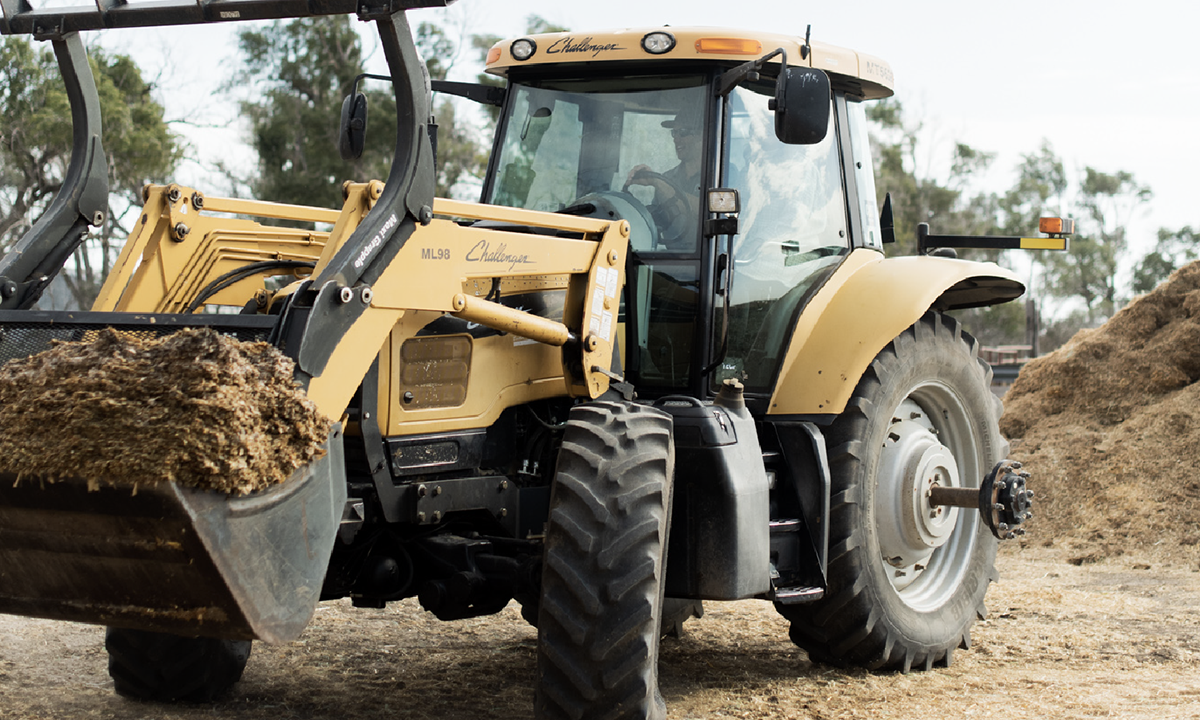Guide to Farm Machinery Terms
To say farm equipment has evolved since the days of sickles and pitchforks would be an understatement. Today’s modern farmer has access to a variety of equipment and technology that help efficiently feed our growing world. In this blog, we'll provide a comprehensive overview of some of the most common terms used when referring to farm machinery. Whether you need to communicate with a mechanic or simply want to improve your knowledge of farming equipment, this Guide to Farm Machinery Terminology is here to help.
Tractors: A farm vehicle with large, heavy treads or wheels, used for pulling planters , disks, (or tillage equipment), and other farm equipment.
Season Used: Planting, Growing and Harvesting
Compact Tractor: Small- to medium-sized tractor that is designed for use on smaller properties and farms, or for specialized tasks.
Wheeled Tractor: A type of tractor that has wheels instead of tracks, typically used for tasks like tiling, material handling, and pulling equipment.
Track Tractor: Specialized farming vehicles that feature rubber tracks instead of wheels, used for larger implements or heavier loads, minimizing compaction and traveling better on wet soil.
Combines (Harvester): A machine used to efficiently harvest a variety of grain crops. It “combines” many tasks including cutting, threshing, and discarding the waste.
Season Used: Harvest
Combine Head: A revolving reel (soybean head) with metal teeth used to cut crops. Different combine heads are needed for different crops.
Reaping: The process of cutting and collecting the mature grain.
Threshing: The process of separating the grain from the straw and chaff, which is necessary to prepare the grain for storage or further processing.
Leaving Cover: The combine spreads out non usable parts of the plants (stem, leaves, hulls, etc.) onto the field so they can be turned into nutrients for next year’s crop.
Plows: Used to cut furrows in the soil, loosening it and killing any surface vegetation not intended to be there. This process is also known as tilling.
Season Used: Harvest
Moldboard Plow: Type of plow that is equipped with wing-shaped blades, specifically made to slice and turn the earth. This type of plow is suitable for deep and superficial soil turning, which is frequently required for land that has been left fallow for multiple years and is being used for crop production again.
Disc Plow: Made up of a series of discs that function to turn the soil and break apart weeds.
Chisel Plow: Characterized by long shanks that dig into soil and turn it at a depth of one foot or more, commonly needed for land that has undergone consistent crop cultivation.
Tile Plow: Used to install underground drainage systems, also known as drainage tile. These drainage systems are used to remove excess water from fields, which can be a problem for crop growth and productivity.
Balers: Crucial tools for collecting hay, straw and corn stalks, they are pulled by a tractor and gather these materials to compress them into bales.
Season Used: Summer and Fall
Round Baler: Gathers, compresses and rolls hay into large cylinder shapes.
Square Baler: Gathers and compresses hay into small rectangle shapes.
Attachments: There are a wide variety of tractor attachments that are commonly used to help efficiently use machinery.
Season Used: Planting, Growing, Harvest
Sprayer: Used to administer, insecticides, pesticides, herbicides, and fertilizer.
Manure Spreader: Used to distribute manure over a field as a fertilizer.
Cultivator: Used for soil preparation, specifically to control weeds, they are designed to perform shallow tillage.
Planter: Used for sowing seeds in a row through a field, including larger seeds that cannot be used by seed drills. Planters come in a variety of sizes, all with an even number of rows most commonly ranging from 12-48.
Seed Drill: Similar to a planter, the seed drill is used to sow seeds into the soil by pressing them to a specific depth and distributing them equally. Once the seeds are properly placed, the seed drill machine then covers and compacts the soil on top of the seed.
Rake: Available in several types such as wheel rakes, parallel-bar rakes, rotary rakes, and belt rakes, rakes are an essential tool for any operation that involves making hay.
Roller Crimper: For farmers who incorporate cover crops in their rotation, a roller crimper is attached to a tractor to kill the cover crop, leaving it on the fields as organic matter. The roller crimper is a large, heavy cylinder with long blades that make a chevron pattern.
Grain Tools: A group of specialized machinery that are used to handle and transport grains such as soybeans, wheat, corn, and barley, etc.
Season Used: Harvest
Grain Cart: Used to move grain from the combine to a wairing truck.
Grain Vac: Used to move grain from bins to grain trucks.
Grain Truck: Used to haul harvested crops from the field to a storage facility.
We hope that you have found this Guide to Farm Machinery Terminology to be a useful resource in your understanding of the terminology used in the farming industry. If you are interested in learning more about farming terminology, check out our Guide to Farm Animal Vocabulary and Need to Know Terms.
Interested in seeing these machines at work? Check out our YouTube Short highlighting these terms.







